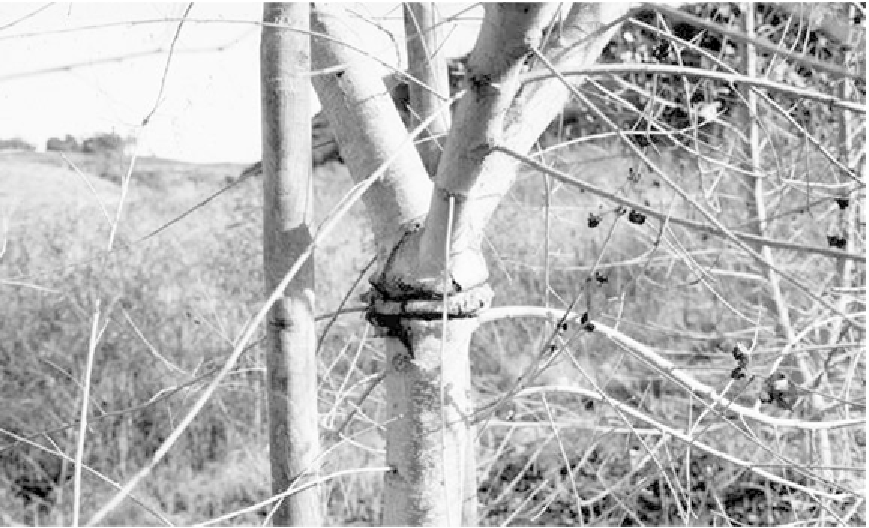Environmental Engineering Reference
In-Depth Information
FIGURE 13-1.
In this example of poor maintenance practice, a neglected tree has been permanently
damaged by unnecessary staking and strapping that was tight and unattended. As a general rule, no plants
should be staked; rather, nursery production should ensure that plants are free to react to winds and build
reactionary wood. There are, however, exceptions when staking is necessary. In such cases, be sure to
monitor plant condition to prevent damage. Double looping loosely with two stakes is best, if staking is
required. (Photo by John Rieger.)
The effectiveness of a technique may require testing because not all techniques can be applied
universally. Incorporating an experimental design into the overall project design can enable more
rigorous evaluation (Kentula et al. 1993).
This leads us to the second purpose of monitoring: to establish a database for use in the plan-
ning of subsequent projects. Questions commonly arise related to the expectations of a planned
project; having an existing database of prior projects and how they performed will provide confi-
dence for the stakeholders and the team. Another benefit is to see how under differing conditions
or circumstances, the response of the site will enable you to discard some techniques or adopt
different material or methods that would normally not be considered for subsequent projects.
A third purpose is to verify that the project was executed as designed and is meeting the objec-
tives or success criteria for it. These requirements may be ones that were generated for comparison
purposes by you, the team, or the sponsor or applied by a governmental regulatory agency. Meet-
ing or complying within these guidelines is often a requirement for permits.

Search WWH ::

Custom Search